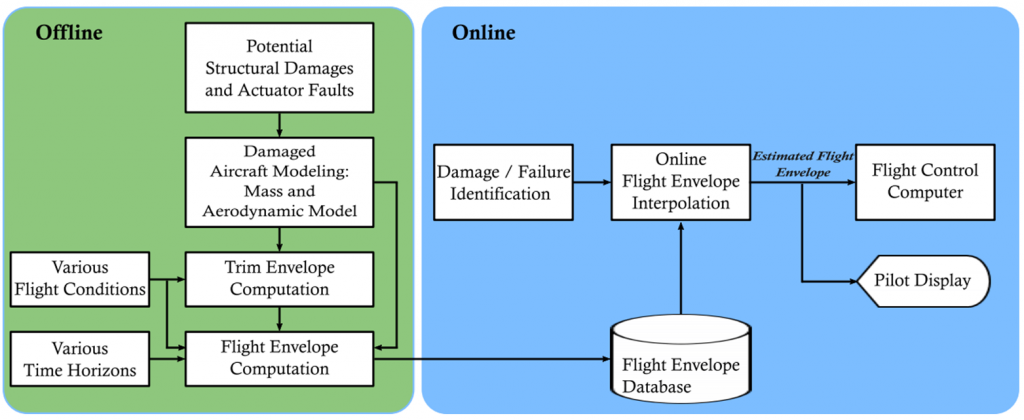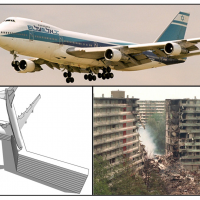Currently, Loss of Control (LOC) is the primary cause of fatal accidents in aviation, accounting for 44% of all fatalities between 2005 and 2015. LOC is the result of the aircraft leaving what is known as the safe flight envelope, which is the region of safe flight conditions for which safe operations of the aircraft can be guaranteed. While this envelope is documented in the flight manuals of each certified aircraft, it may shrink in some unknown way as a result of structural failures.
State-of-the-art fault tolerant control systems are capable of stabilizing a damaged aircraft in the first seconds following a system failure, but may command it out of the shrinking flight envelope while doing so, thereby merely postponing a LOC event. It is therefore of paramount importance that the shrunk safe flight envelope is predicted immediately after a failure event, such that the flight crew or automatic flight control system can act accordingly. While methods for flight envelope prediction based on for example Reachability Analysis exist, these methods are not suitable for online (real-time) use.
There is both a practical as well as a fundamental reason for this. The practical reason has to do with the very high computational costs of predicting the flight envelope using reachability analysis which is subject to the “curse of dimensionality”. The fundamental reason is that any reachability analysis related method requires a global model of the aircraft, which is not available after a damage event.
This research project aims to circumvent these arguments by using a new database-driven approach for real-time envelope prediction. This approach requires a database with safe flight envelopes for a number of characteristic damage cases which are calculated offline. If during a failure occurs during flight, a database lookup and interpolation is performed on the stored safe flight envelopes based on the particular damage case.

System architecture of the database driven flight envelope prediction approach, highlighting the offline part (green) and online part (blue).
The approximated safe flight envelope is then used to provide new operating bounds to the (fault tolerant) flight control system and to improve the situational awareness of the aircraft crew. An example of the complete system, called FENCE (Flight Envelope Predictive Controller) is pictured below.

Flight Envelope Predictive Controller Architecture
The database approach requires accurate models of damaged aircraft. Obtaining these models is very challenging, for obvious safety reasons. Currently, we use DATCOM based methods to derive approximations of the aerodynamic models of damaged aircraft. In the future, we will extend these approaches to include wind tunnel experiments, and CFD analysis. With drones, flight test experiments of damaged configurations are a possibility that is currently under investigation.
Current research within this project is focused on:
- Modelling of damaged aircraft
- Determining the safe flight envelope using the damaged aircraft models
- Creating a structural damage classification system
- Creating a database lookup and interpolation method
- Designing control architectures that make use of the dynamic envelope bounds, and new visual interfaces for pilots.



